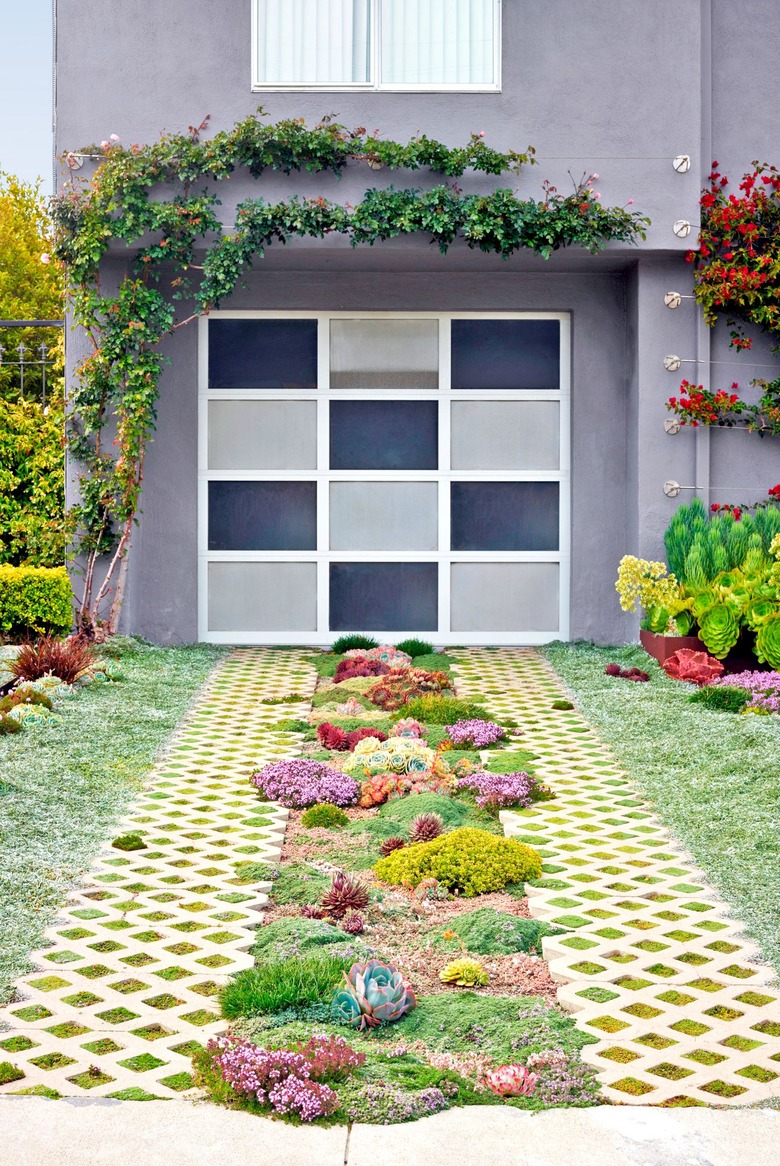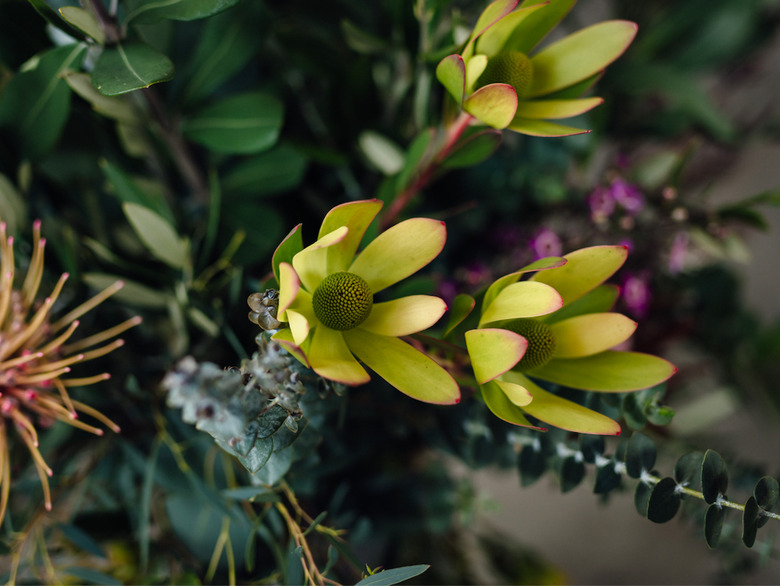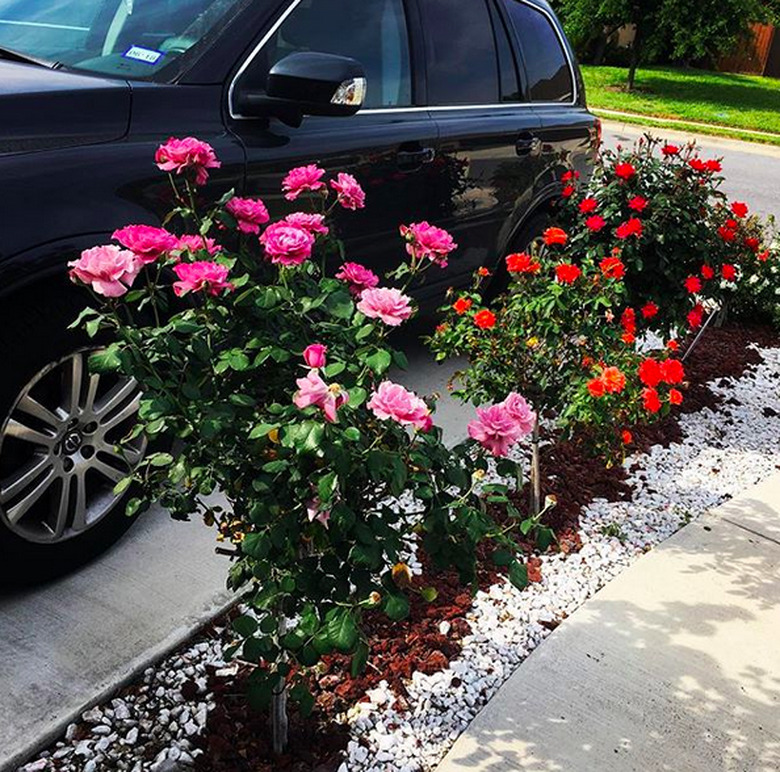Driveway Gardens Are Totally Trending, And We're Here For It
Traditionally gardeners only plant flowers in the backyard or around the front lawn, but times they are a'changing. These days, anywhere is fair game for a garden, from fire escapes with hanging baskets to roof gardens. If you love to keep up with the trends, here's the very latest: driveway gardens — adding flowers and foliage to the area your car calls home.
What Is a Driveway Garden?
What Is a Driveway Garden?
Putting in a driveway garden doesn't necessarily mean that your car tires will pass directly over the plants, although it can. The whole idea of a driveway garden is to bring nature into an area that is often cemented over and there are lots of options for doing just that.
Why should you consider adding a garden to the driveway area? Remember that the entrance to your driveway is the gateway to your home and yard. You drive it every day so it makes sense to dedicate some time and effort to making it attractive.
The driveway area is also the area that creates the first impression of a property for arriving guests or potential buyers, if your home is on the market. You've heard of curb appeal? A driveway garden adds undeniable curb appeal.
Planting the Center Strip
Planting the Center Strip
If you have a solid cement driveway leading in from the street, consider replacing it with two ribbons of cement. This allows you to drive to your garage or parking area and opens up the area between the tire strips to planting.
To make a center-strip driveway garden, first install whatever concrete, rocks, or gravel strips you need to allow a car to drive in. One "green" option is to put in grass block pavers so that the car is literally driving over plants (which grow up through voids in the blocks).
The next step is to turn the central driveway area into a garden bed. Take out any remaining chunks of concrete or rock and turn over the earth. Work the soil thoroughly, then mix several inches of organic compost into the soil to increase the nutrients available to future plants. When you start the planting, select low plants like creeping thyme (also great for a creeping thyme lawn), creeping phlox, or succulents the car can clear. Alternatively, go for ornamental grasses that will bend as the vehicle travels over them.
Planting Beside the Driveway
Planting Beside the Driveway
Another way to create a driveway garden is to install plants in the strips on each side of your driveway. These areas can be turned into gardens even if they are shaded by your home or garage. Sloping on the sides? Planting on a slope can be particularly attractive.
Once you prepare the soil, select plants that prefer the sun exposure the areas offer. One easy option is to plant a mix of spring bulbs and low-maintenance annuals. Try cosmos, nasturtiums, and petunia hybrids for full sun areas, begonias and fuchsias for part shade.
Perennials last longer but are slower to get started. Consider hellebores, hosta plants, and butterburs for shady areas, while coneflower, alchemilla, delphiniums, geraniums, catmint, and phlox work well for sunnier spots. If you have room, you can add shrubs or trees to arch gracefully over the driveway, like yews, dogwood, magnolias, or willows.
Remember that native plants work well in tough situations and require very little maintenance. If you aren't sure which plants are native to your area, ask at your local garden store.
Adding Plants to the Garage
Adding Plants to the Garage
If your driveway leads to a garage, the building itself provides another opportunity for dressing up the parking area with plants. A classic idea is to plant vines on the face of your garage, like wisteria, Japanese hydrangea vine, or winter jasmine. Be sure that this landscaping works with the style of the house and front yard. You need to think of your house, garage, and yard as one property when it comes to garden design.
A more radical notion is to plant a green roof on your garage. While this idea won't work for everybody, a sod roof will "hide" your garage, tucking it into the nearby landscape and making it less distracting. For a modern version, consider a hydroponic roof garden. It looks terribly cool and helps keep the garage cool in summer and warm in winter.
Deciding on Your Driveway Garden Plan
Deciding on Your Driveway Garden Plan
It's not easy to decide which of these driveway garden options would work best for your property. If you want to keep to a budget, it's probably best to leave your current hardscape and plant around it. It is decidedly cheaper to plant along the edges of a driveway than to pull up the driveway and install cement ribbons.
Another consideration is focus. The driveway garden will naturally draw a viewer's eyes toward certain features of the property, so you need to think about which features are best emphasized.
For example, if you plant bright annuals in flower beds paralleling the driveway, anyone glancing at the house will look down the driveway to whatever is at the base. If your driveway ends at a garage that is draped in vines, this can work to your advantage. On the other hand, if the driveway heads to a plain, blocky garage, this may not be the best option.


